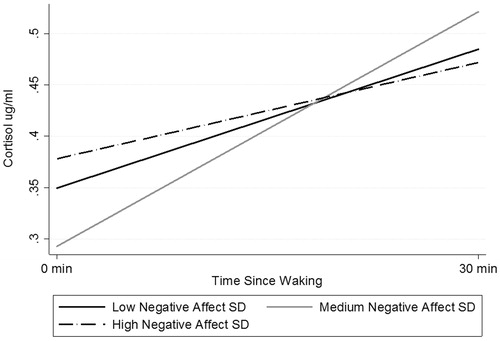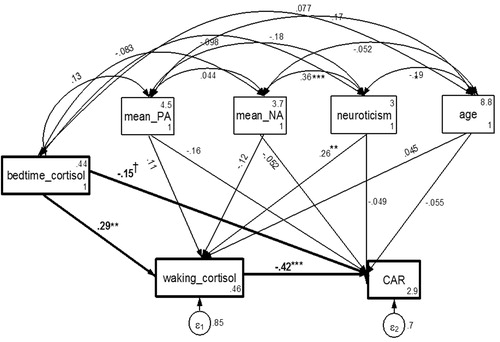Figures & data
Table 1. Results of hypothesis testing of the risk of being in a specific CAR group in comparison to the baseline CAR.
Figure 1. CAR slopes as predicted by negative affect SD on previous day. The Moderate-Affect-Variability group has a lower intercept than the other two groups (low, high iSD). Further, this graph illustrates how higher variation in NA is associated with not only higher waking levels of cortisol, but also a flatter CAR slope.

Figure 2. Path analysis examining the relationship between previous day's bedtime cortisol levels and the next day's waking cortisol and CAR. Higher bedtime cortisol was associated with higher waking cortisol the next day. Further, the path from waking cortisol to CAR on the same day indicated that waking cortisol had a significant and negative relationship with CAR, suggesting that higher waking levels of cortisol were associated with flatter CAR. Note: ***p <.001; **p <.01; †p <.10; CAR: cortisol awakening response; mean_PA: mean positive affect; mean_NA: mean negative affect; all coefficients standardized.

Table 2 Path models of bedtime cortisol to waking cortisol to CAR (n = 98).
